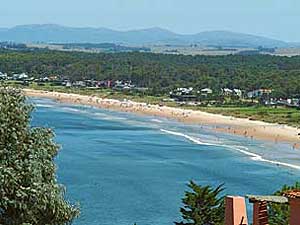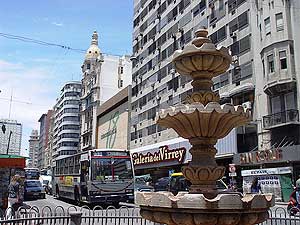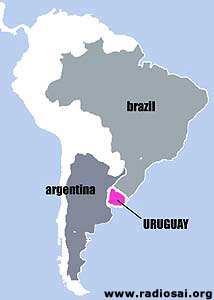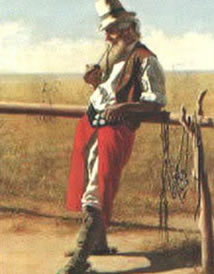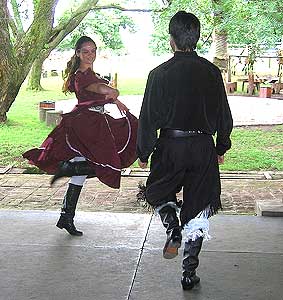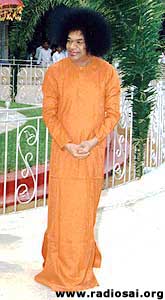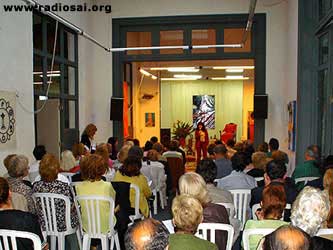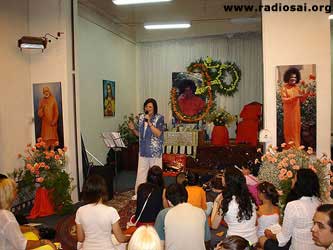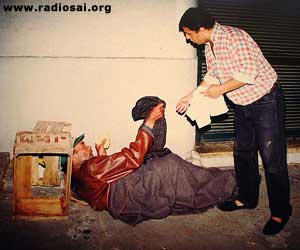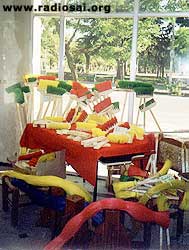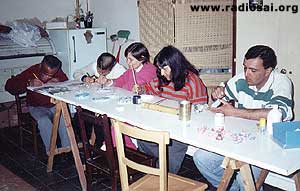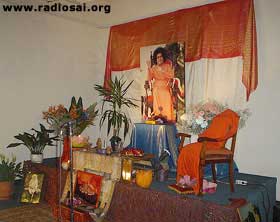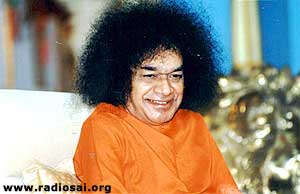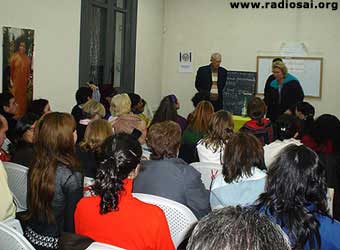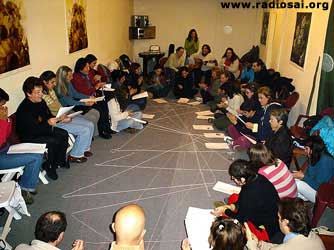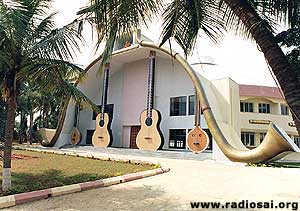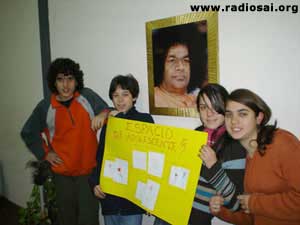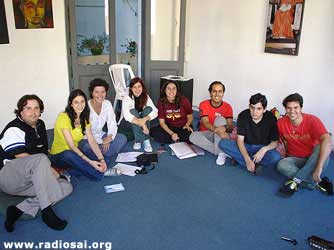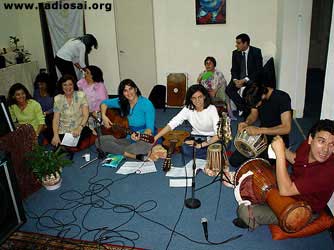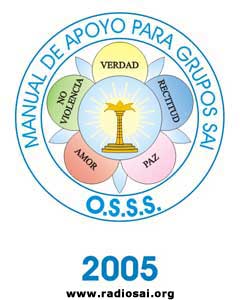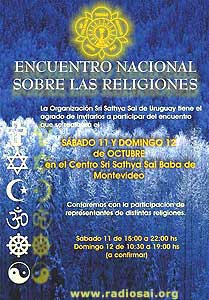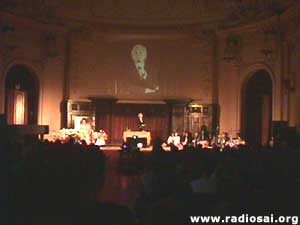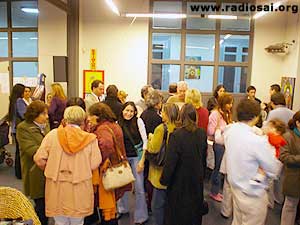 |
 |
 |
Volume
5 - Issue 03 MARCH 2007
|
Unique Uruguay It may be the second smallest country in South America (with less than one hundredth of the continent’s area), but it attracts more visitors per capita than any other South American state. There is something truly unique about this tiny state, Uruguay, located in the south east of the continent on the shores of the Atlantic Ocean. Maybe it is the 500 km pristine coastline which is one white long sandy beach, occasionally interrupted by dunes, pine, acacia and eucalyptus trees; or could it be its fashionable summer resorts and tranquil beach-towns?; or is it its charming colonial towns and fortresses?; or its vibrant art, music and jazz festivals which draw large crowds?; or is it the pull of its inviting hot springs, serene natural forests and captivating hilly interiors?; or could it be because of its interesting capital, Montevideo, a city with a quality of life enviable even in the developed world?; or is it just its magical climate with no extremes of temperature coupled with an absence of natural calamities, abundant supply of water and miles and miles of greenery? Well….it is not any one of these, not even the sum of all these; it is all these together and much more. And what is that ‘extra’ that makes Uruguay exceptional? In two words – the People.
Yes, the indomitable sense of freedom, fiery spirit and at the same time the warmth and large-heartedness that the inhabitants of this land have demonstrated for centuries is rare to find. When Spanish invaders came to occupy it in 1516, they were repelled bravely by the people of this land and Spain could succeed only in having very limited settlements. This gallantry in combat is what has made the Charrúa Indians (Uruguay ’s most important indigenous tribe) famous.
In fact, even today one can find war-weapons and utensils used by the original inhabitants in the National Historic Museum in Montevideo, the country’s capital. One of the noteworthy facts about this nation (officially called the Eastern Republic of Uruguay) is that since 1825, when it gained independence from Brazil, the country has remained a democratic republic, apart from a very small intermission of few years. By far, it is the most politically stable republic in Latin America. Dynamic Development This political stability has bestowed it great benefits starting with a progressive economic prosperity to a rich and lively sustained cultural activity. It is for this reason that the country has become home to thousands of immigrants. 94% of its population is of white European descent comprising of Spaniards, Italians, British and German to Croatians, Greek and Armenians. Over the years the country has grown in every sense. Demographically, it has a large middle class and a literacy rate of 97%, comparable to any developed country in the world. Economically, it is very resilient with its investment-grade sovereign bond rating staying intact in spite of severe trade shocks. And in recent years, Uruguay, tapping its advantage of nearly three million literate people has shifted its focus into the IT sector and now has become an important software exporter and outsourcing hub in Latin America. On the education front, in 1875 itself, it had public schools which offered free, secular education for the first nine years, a program which continues even to this day. Between 1965 and 1985, the enrollment in secondary school grew from 44% to 70%. Today its universities are known for their high quality of education, notable among them being the University of the Republic, Uruguay. Spirit of Liberty
With all these developments, Uruguay is still a country of soft gentle hills and large green pastures. Gifted with four river basins or deltas, agriculture has always been the country’s mainstay. Uruguayan rice is a major export commodity. Apart from this, given its temperate climate and predominantly gently undulating landscape, cattle-raising and wool-harvesting are among its principal occupations. There is no doubt that the “gaucho” (cowboy) is the character that has had the greatest influence on Uruguayan society. His origin is found in the 18th century from the white or “mestizo” (half-breed) that used to live free in the plains, surviving from nature’s abundance. They were excellent riders that became famous for their independent spirit. No wonder that the gaucho has became the symbol of this country which has as its motto “ Liberty or Death”. This idea of liberty flows to every field of activity in Uruguay, including music and sports. Its music is a grand confluence of African beats, Spanish guitars and American rock and jazz. The country shares with Argentina, the credit of creating the Tango, the scintillating dance-and-song art style which has become an indelible part of the its culture. And in sports, football rules the roost, though rugby and basketball are also popular. The country has two Olympic gold medals in football. In fact, the First World Cup in football which was held in a specially constructed stadium in its own capital, Montevideo. It would be interesting to mention here that Montevideo, incidentally, is the capital, largest city, as well as the chief port of Uruguay. In fact, it is considered as a ‘primate city’ (just like London, Paris or Tokyo) given that it is more than twice as large as any other city in the country.
But more than all these achievements and fascinating facts, the most salient fact about this nation is that, though it is pint-sized, its people are large-minded and warm-hearted. This is precisely the reason why it attracts hordes of tourists every year. Even grander than this is its spiritual dimension. The commitment to ethical principles in this sixty-percent Roman Catholic country is commendable. To its credit, it is the second least corrupt country in Latin America (the first being Chile). Sathya Sai and the Uruguayans Having said all this about this beautiful country, it would be facinating now to know how and when did Sai enter this principled nation? And what impact did it have in the lives of Uruguayans? In was in 1980 that the first Sai Group began to function in Barra de Carrasco in Montevideo. Sometime later, in September, 1985, Mr. Leonardo Gutter and Mrs. Mónica Socolovsky from Argentina came to Uruguay and gave official sanction to create the first Sai centre.
“How Sai Came Into My Life”
There were not many devotees in Uruguay then, but slowly and steadily the immense love of Sai was finding place in the hearts of the people who had taken the first steps towards Him. To give an instance, here is Ms. Julia Salas’s story. She says, “It was the year 1987. The Lord’s hands were over me. I had just lost my elder daughter and was searching for some therapeutic help for my younger daughters to help them overcome this difficult moment. During those times I assisted at the Sivananda Centre, a master whom I still adore. Still, somehow my heart longed for something beyond, for someone who would be “the Master” for me, though my love for Sivananda has not diminished since. The doctor who attended on my daughter Florencia, spoke constantly of Sai Baba to her in my absence and when I went to meet him eager to know about my daughter’s progress, he spoke fondly about Sai Baba to me too for a long time. Reluctantly I agreed to visit the newly inaugurated Sai Centre of Montevideo. My first visit to the Centre happened to be during the devotional group singing session and the moment I entered the place and saw an image of Baba, I fell at His feet. I can say that I just fell in love with Sai in the best sense of the word and my heart was full of love. From then on, not only had I found the Master of Masters, but also Him who would soothe my sufferings. Some time after this incident a devotee of Uruguay was traveling to India and I wrote and sent a letter to Baba. What I wished and requested in that letter, was fulfilled within a few years and was also confirmed by Him in a darshan in the year 2002.”
Sai Inspired Service As more and more such Uruguayans found ‘their master’ and ‘their refuge’ in Sai, the number of devotees only grew and now they wanted to transform their devotion into service for the needy. That is this best way they thought they could express their gratitude to their beloved Swami. When Montevideo’s Centre was formally registered with the name “Centro Sai de Montevideo Este” at the corresponding Culture Ministry of Uruguay on January 29, 1988, it only helped the devotees to organise themselves better in offering selfless service.
They started with a few activities like assisting at an old age home, helping poor and impoverished children of the streets, donating clothes, food, etc. In fact, for the past seven years, Narayana Seva (offering food to the poor) has been going on every Sunday for people living on the streets by the devotees of the Montevideo Sai Centre. One of the youth who is an active participant in this service says: “It’s not only about taking food to them, they often prefer to talk with us rather than eat. It is then that I realized the basis of everything is Love - the Sai Love we take to them is all that matters. Without that Love, there is no service at all. One day Mr. Olmedo, who lives in his little cardboard house, told us, ‘I would like to tell you that I hope you’ll always be present in my life.’ In those moments, we realized that we needed him as much as he needed us.” Many years ago, when a long standing devotee of Swami, Dr. Fanibunda, a dentist from Mumbai, asked, “Swami, what is the role of the Sri Sathya Sai Seva Organization in Your mission?” To his utter amazement, Bhagavan said, “Nothing.” He was startled. Looking at Swami, he continued, “Swami…nothing?” Swami confirmed, “Yes…nothing.” Dr Fanibunda couldn’t help but ask the question: “Swami, then why is there such a huge organization setup?” Swami explained, “It is only for your chitta shuddhi – purifying your heart.” And this is exactly what was happening in Uruguay. The people who were served were being benefited more than the people who were served. The transformation it was bringing in the hearts and minds of people was heartening. The devotees helped anybody who asked for help without any distinction. When a priest sought the help of Zulma, a Sai devotee from the Sai group of Juan Lacaze (a city in the Colonia department of Uruguay), she lovingly obliged. And in the process she was greatly rewarded. Recounting her experience, she says, “In 1990 a priest saw the need of a centre for the physically and mentally handicapped in our community. I was called with three other people to select those who really needed to be served and would remain as the users of the Centre. We started to face all the difficulties one generally encounters in such work from monetary constraints to lack of specialised expertise in handling such type of disabilities. Thanks to three institutions who gave us all possible help, we realized that we would have to rehabilitate the disabled persons at the social as well as the functional level. We had to give some kind of occupation to the members of the institution. We were contacted by someone who had perfected the art of making of brushes and assembling of notebooks. We chose the workshop on construction of brushes for sweeping floors. After years of hard work, we managed to sell these to various co-operatives and businesses.
In 1996, I had a meeting with Sai Baba in my first trip to India, at a time when the work had receded a lot due to various circumstances. But at the end of my trip, I had become transformed with love and energy flowing towards the need to serve. It is then that my life-force was turned towards the Centre for Help for the Disabled. For me, it was the third time that the Divine presence was felt. Today we have legal standing and twenty three people are being served by the teachers; there is a technical team to provide help in the areas of sociology, social assistance, physiotherapy, singing, physical education, yoga, handiwork and painting - all by His grace. In the year 2001, the Sai Group in Juan Lacaze was formed after my return from seeing the beloved Avatar in my third trip to India, and today the people who form the group, work with me in the Centre for Help to the Disabled. With the help of the Sai Centre we attend to the needs of the physically and mentally challenged based on the teaching of Sai: Service to Man is Service to God. And the activities received greater momentum when, in 2006, the Sai group gained official status.”
Another important initiative taken up by the Sai devotees was the setting up of the Sathya Sai Baba Blood Donors Club in February 2004. Done in arrangement with the National Blood Service in Montevideo Sai Centre, this has played a great role in saving many lives and has provided a beautiful opportunity for the volunteers to offer “Liquid Love”. EHV Takes Roots, Ennobles Minds
In her first trip to India, one Uruguayan devotee was listening to a Divine Discourse in Prasanthi Nilayam. As usual, Swami’s discourse was in Telugu. But, this devotee could understand Bhagavan’s golden words. It was a real miracle! And she was so amazed and inspired by this blessing, that from that moment on, she dreamt of great accomplishments in Sai Education, which were finally organized in Uruguay and benefited several South American countries. We know, one of the principal theories on which the EHV programme’s work is ‘practice and then preach’. It invites the teachers and EHV trainers to first live the message before advocating it to others, because Youth and children learn more from what they observe than what they hear. And Swami is always there guiding the teachers and goading them to perfection in His own inimitable way. Sharing her inner transformation steered by Sai, Ms. Maria Delia, says, Transformation from Within “I remember the month of March 1990 as something a long time ago. I was immersed in a profound depression, seemed like drowning in a never ending well of thoughts. I questioned myself many a time, what was my role in this life? Why did I exist? Who needed me and who cared about me? I had lost my self-esteem and was seeking, but with my heart closed. One day, I pleaded ‘for a sign’ to something superior - and that is when Sai Baba appeared in my life. Surprisingly enough, a handout of the Sai Baba Centre landed in my hands. One Sunday I decided to visit that place. The devotional songs in Sanskrit and Indian languages touched my heart profoundly and even without understanding a word, I knew a lot of positive energy vibrated around the devotees who had so lovingly revived me that day. I discovered that here was ‘the sign’ that I had asked. I just wanted to be there, and then return again and again to that vibrant energy which was so loving and sublime - and till today I enjoy the same.
Since then, feeling that divine nectar that is the presence of God, knowing little by little about my own errors, my mistakes, working on them and eradicating them has been my way. Now I know that discipline, order, responsibility, being non-violent, and having love for all, blesses us to transform for the better. These qualities expand our consciousness internally to receive benefits of peace and harmony. Many years passed and sharing in the activities of the Centre I learnt a lot. But there was something that I had to work on and that was my anger. I spent a lot of years trying to eradicate it from my life, I suffered, cried and after various intents of trying to surmount this defect, when I believed that I had overcome it, Swami had a test ready for me and ‘zap’ there it would re-appear. When I said, ‘Swami, I give You my anger’, my temper went on disappearing; I hurt many and repented later. I thought I could control this weakness, but nothing worked until I gave it away to Swami. In His messages, Swami says ‘Give me all your miseries and doubts’. I realized that until I understood this and practiced the same, I wasn’t going to be without my anger. In another period I had be operated upon and risked losing my life. I dedicated my life to Him and said, ‘Lord, You know why this is happening to me, what you decide will be the best for me, whatever be the result.’ It so happened that my recovery was a total success, nobody ever wanted to believe that I had been operated and successfully sent home. During all of the treatment of three and a half months, I would repeat the Gayatri mantra and after five years the medications were stopped. Ten years have passed since this incident and I am hale and healthy. Remembering Him at all times, let’s always be happy.” Creating Human Values Endowed Teachers
As such personal transformations were taking place in the minds and hearts of people, it only created the right people the EHV program needed to take it to the next level. The quantum jump in EHV development came in 2000, when a group of motivated devotees decided to prepare themselves to instruct various teachers in the Sri Sathya Sai Education in Human Values Program. And since then many teachers have been qualified in the EHV programme. The experience of the educators who have contacted the SSSHVE has been universally positive. They say, “We are able to live in their own lives the truth of Baba’s words that we can transform ourselves only by the practice of human values.” But ‘who gives and who receives?’ This is the question the egoless brothers and sisters who facilitated the course ask. Their inner growth is so intense that it is difficult to discern who is the giver and who is the receiver. The whole concept of EHV is based on love, unity and service, and the trainers were ‘living examples’ of these principles. As the EHV movement grew on the shoulders of such inspired souls, the need for EHV teachers increased manifold. It was therefore decided to have a sustained two year course on Human Values Program training for teachers, which was conducted in the Montevideo Centre in the year 2000. In the same year, when information arrived about a Human Values Conference being held in Prasanthi, the Uruguayan Sai Organization sent a well known school teacher, Mr. Héctor Florit, to attend the Conference.
It would be interesting to mention that it was also the year when Swami inaugurated the Sri Sathya Sai Mirpuri College of Music and contributions of typical instruments for the Music Museum were welcome from all countries. Uruguay took this opportunity and sent three different drums (Afro-Uruguayan) for the Museum. Not only that, one of the musicians from Uruguay, a symphonic percussionist, was also part of the Worldwide Orchestra which performed in the divine presence in Prasanthi Nilayam on Bhagavan’s 75th birthday. When an Educare Conference was held in Prasanthi Nilayam in 2001, the National Coordinator of Uruguay, Mrs. Ada Fernández, participated in it on behalf of the Uruguay Sai devotees. Inspired by Swami’s emphasis and direction, the devotees in the same year started the second Human Values Program teachers' training Course. The graduates of these EHV courses have become invaluable resource-persons who have implemented this unique program to great success. Success begets success, they say. And this is exactly what has happened with the EHV program in Uruguay. The last training course held was in May 2005 in which more than 70 people participated and learnt the principles and practices of Human Values over three months. Sai Youth Leading the Way Be it the EHV program, the service activities or any other spiritual activity, if all of these are flourishing today in Uruguay, it is primarily because it is ably supported and at times steered by the energetic Sai Youth. The Uruguayan Sai Youth are known for their dedication and sincere adherence to Swami’s teachings. Since the first Latin American Sai Youth Camp organized in Argentina in 1997, the Sai Youth of Uruguay have been active participants of all Youth Camps and Retreats. In fact, the fourth Latin American Sai Youth Camp in 1999 was organized in Uruguay itself. Two years later, when the Camp was held in Paraguay in 2001, more than 20 youth attended and benefited from it.
One of the important programmes handled by the youth is the Teen Youth Sai Program. During 1999 and 2000, the youth visited a State National Home (INAME, INAU nowadays) for children up to four years old every first Sunday of the month and spent time with them singing and playing, apart from giving snacks and gifts. The Manual for the Teen Youth Sai Program that the Youth brought out was considered comprehensive and special, and therefore was translated into Spanish in 2001 and 2002. Once in Spanish, it helped youth in many countries of Latin America to adopt similar kind of service activities.
The Youth have been always in the forefront in all the activities of the organization. After the Sai Latin American Youth Camp in Peru in 2000, many Youth committed themselves to become trainers in the Sathya Sai Human Values Education Program. By end of 2001, every youth in the Program had finished the training and were ready to work with children and adults. Later, Ms. Ada Fernandez Chagas, was trained in the Institute of Sathya Sai Education, Malaysia to coordinate the Teen Youth Program in Latin America. When she returned from Malaysia, the Sathya Sai Youth Program formed five groups to collaborate in the translation of the Manual of the Sathya Sai Teen Youth Program at the Sai Centre Montevideo, having the support of adult devotees. In 2002 this extraordinary Program was presented to people through the practice of the different techniques with a group of non-devotee youth from La Floresta resort in Canelones.
The Sai Youth Program is always live and active. Since 2004, the youth hold meetings every last Sunday of the month for teens in the Montevideo Sai Centre. And every passing year there are more inspired youth joining the Human Values Education course held in Montevideo to be trained as Human Values Educators. Apart from dealing with teens and human values, the Youth also conduct other service activities like the ‘Sai Orchard Project’ where in 2003 a technique of organic gardening was practiced which had as its goal the development in Sai youth of family unity, the value of work, self sufficiency, ceiling on desires and health. This experience was held for a whole year in the Sai Centre in Montevideo, and some of the youth members even succeeded in implementing it in their homes. Sai Meetings for a Peaceful Uruguay While all these activities are going on at the level of the Sai Centres and Sai groups, there are other projects being undertaken at the national level. In the beginning of 2003, work began on creating the Manual de Apoyo para Grupos Sai (MAGS), (or Supporting Manual for Sai Groups) which could help newly starting Sai groups in their activities. This was the first service project at National level and was a very important one too with Sai Centres proliferating in all parts of the country. Though it took two years to complete, once done, it helped as an invaluable support material not only for Uruguay, but also for the whole of Latin America.
The first half of this decade (2000-2005) saw many public meetings being organised by the devotees in Uruguay to spread peace and harmony. In 2003 the National Coordination Committee together with the Sai Centre of Montevideo organized the ‘First Conference of Religions’. It took place in the Centre of Montevideo, and many speakers from the main religions of the world gave spirited talks emphasising the commonalties of world religions. Another similar ‘National Encounter on Religion’ was held at the Sai Centre Montevideo in 2004. All these conferences and workshops were coordinated by devotees and non-devotees representing these religions. One important facet of all these meetings was the heartening unity that reigned among all the speakers. There was a perceptible atmosphere of tolerance and peace and one could feel His presence throughout. After the Latin American Sai Meeting in Buenos Aires, Argentina on May 8 and 9, 2004, which was attended by many Uruguay devotees, Baba inspired these devotees to repeat in their cities the wonderful experience they had in Buenos Aires. And with the energy of the unforgettable event held in their neighbouring country, the devotees in Uruguay organized a National Sai Meeting in Montevideo, the capital city, in September 2004. This would be the last of the series of Sai Public Meetings in the cities where Sai Groups exist before the 80th birthday celebrations of Bhagavan in 2005.
The Immeasurable Glory Meetings or no meetings, bhajans or no bhajans, the Sai movement in this small tiny Spanish speaking nation has only grown in greater pace in recent times, thanks to the mysterious ways of the divine. Though located thousands of miles away from Puttaparthi, and comprised of devotees who may not have seen Swami physically even once till now, the way divine love touches the hearts of so many simultaneously is unfathomable. It would be difficult to put in words what fills devotees’ beings with ceaseless inspiration and propels them to dedicate their lives in His service. Just like the Lord who is only One, without a second, the Sai Movement in Uruguay too is unique, exceptional and divinely inspiring. - Heart2Heart Team We are grateful to Mr. John Benher and many devotees of Uruguay who made this article possible.
|
||||||||||||||||||||||||||||||||||||||||||||||||||||||||||||||||||||||||||||||||||||||||||||||||||||||||||||||||||||||||||
| You can write to us at : h2h@radiosai.org |
Vol 5 Issue 03 - MARCH 2007
|
Best viewed in Internet Explorer - 1024 x 768 resolution. |


